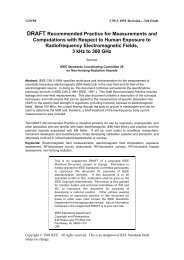An introduction to the quark model
An introduction to the quark model
An introduction to the quark model
You also want an ePaper? Increase the reach of your titles
YUMPU automatically turns print PDFs into web optimized ePapers that Google loves.
Few-charge systems His<strong>to</strong>ry of <strong>the</strong> <strong>quark</strong> <strong>model</strong> Mesons Baryons Multi<strong>quark</strong>s and o<strong>the</strong>r exotics Outlook<br />
Chromoelectric binding: unequal masses<br />
Can ano<strong>the</strong>r asymmetry overcome this problem?<br />
Yes! Remember (M + , M + , m − , m − ) becomes more stable as<br />
M/m departs from 1<br />
The same mechanism makes (QQ¯q¯q) evolving from unbound <strong>to</strong><br />
stable<br />
See Ader et al. (1982), Heller & Tjon, Brink & Stancu, Rosina &<br />
Janc, Barnea, Vijande & Valcarce, etc.<br />
The problem is <strong>the</strong> critical value of M/m required,<br />
(cc¯q¯q) bound or do we need (bb¯q¯q)<br />
Two b or not two b, that is <strong>the</strong> question!<br />
<strong>An</strong>d what about a better potential<br />
JMR Quark Model

















